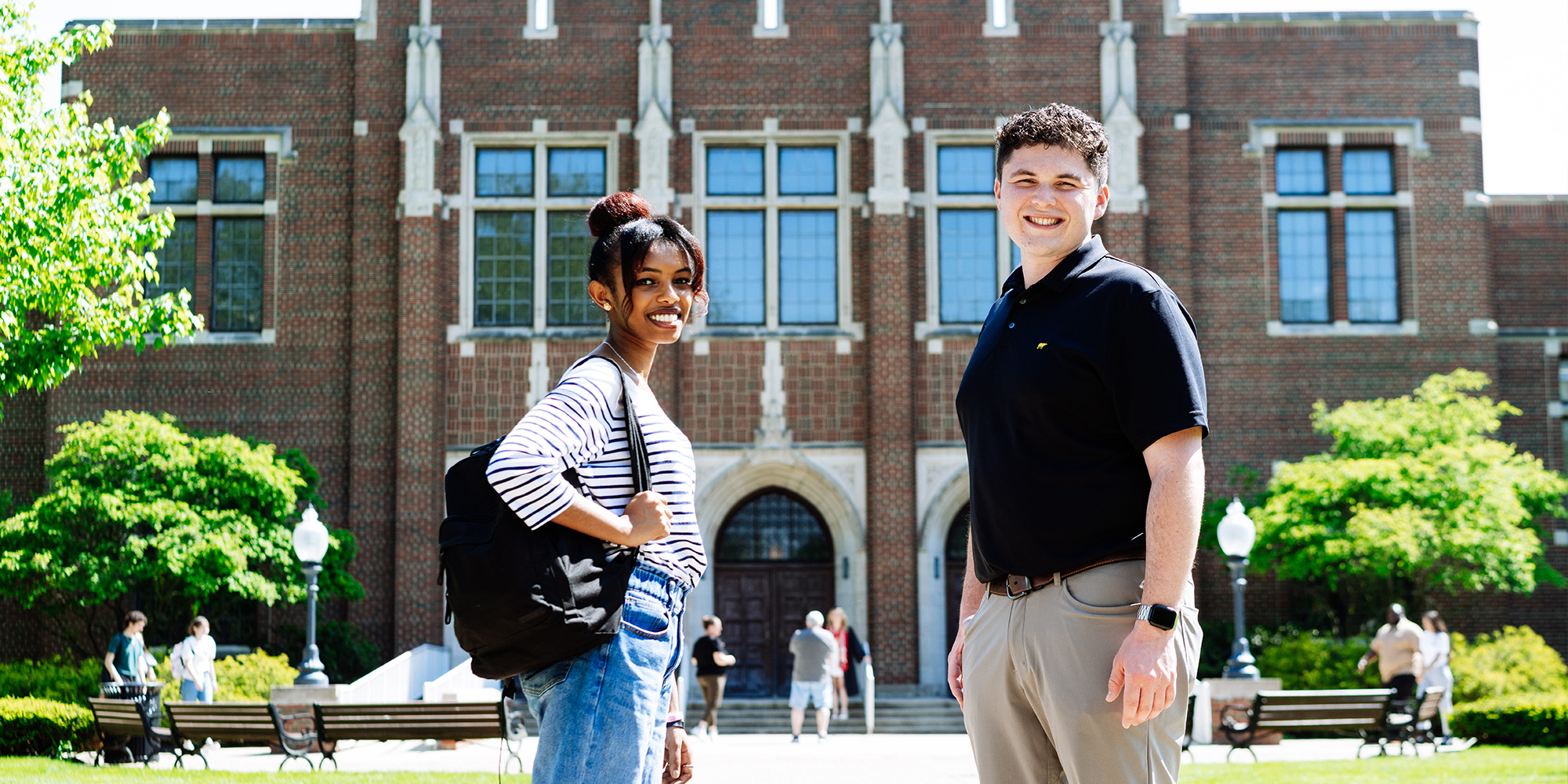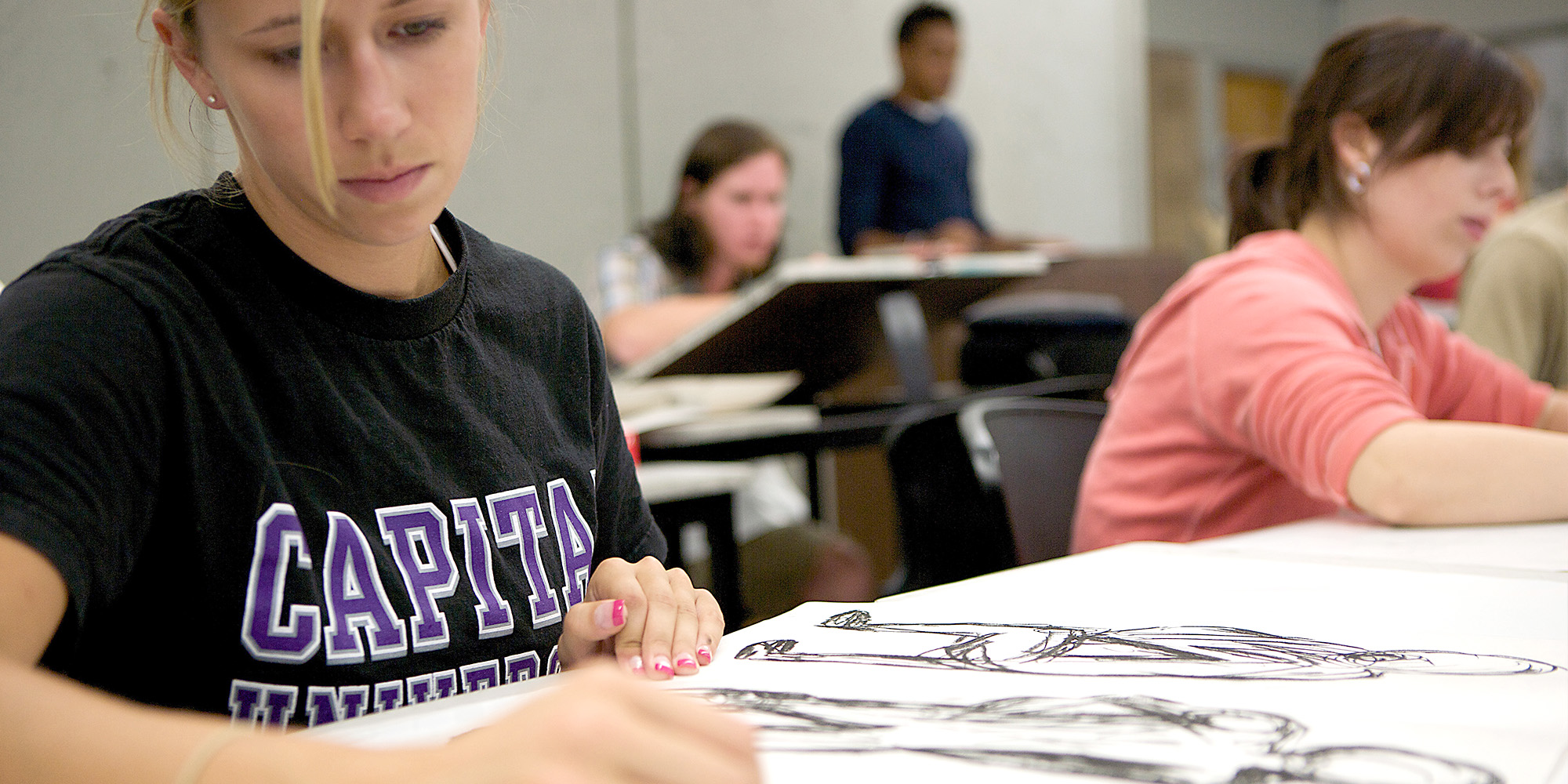Student to Faculty Ratio
The Schumacher Gallery was founded
Explore this Program
Applauded for their talent, Capital students have opportunities to showcase their art both on and off campus. From gallery exhibits in downtown Columbus to designing the t-shirt illustration for the Annual Symposium on Undergraduate Research, students are encouraged to discover new ways to create and expand their skill sets. With Capital's location in the capital city of Columbus, you'll have access to a vibrant arts community and all the opportunities to create, exhibit and experience art a major city affords.
Taught and guided by professors who are also practicing artists, you’ll learn in a setting tailored to the individual at Capital. When it comes to teaching, the art faculty have a single purpose — to develop proficient and creative students in the fine arts within the scope of a liberal arts education. Throughout their time on campus, students build their portfolios and are encouraged to share their art, research, and artistic research at regional and national conferences, as well as local exhibitions.
Located on the fourth floor of The Blackmore Library at Capital University, The Schumacher Gallery offers a diverse selection of works for study and enjoyment. Student work is often featured in the semester-long exhibits and attendance is encouraged at gallery receptions, where students can meet artists and network with patrons who share an interest in their passion and enthusiasm for art. Since the Gallery's inception in 1964, hundreds of donors have provided objects of art, funds, and services to create this important cultural legacy.
Sample Classes
- Painting & Drawing
- Ceramics
- Digital Computer Imaging
- Printmaking
- Foundations in Studio Art
- Sculpture
- Photography

Request Information
Request Information
Schedule a Visit
Schedule a Visit
Apply to Capital
Apply Now